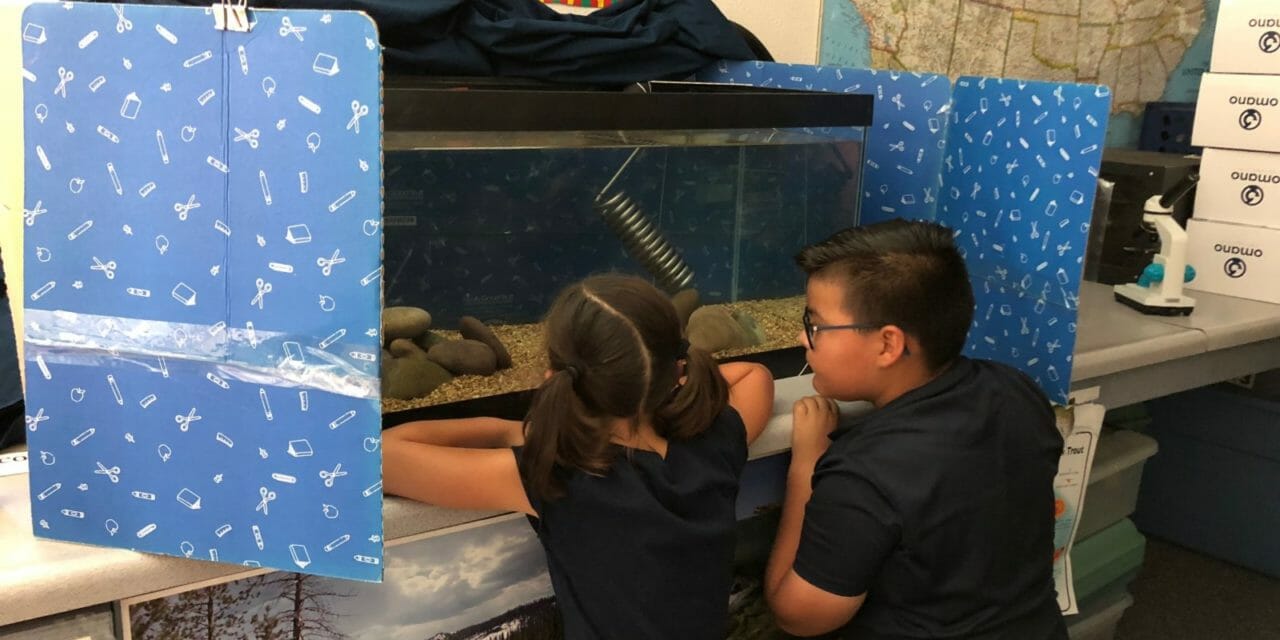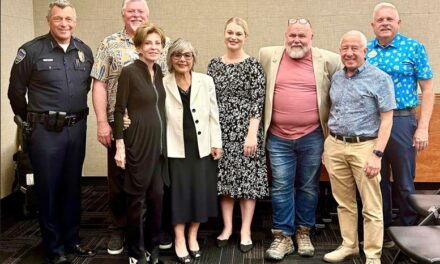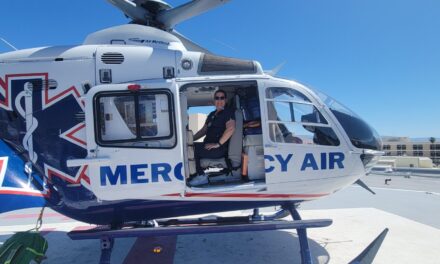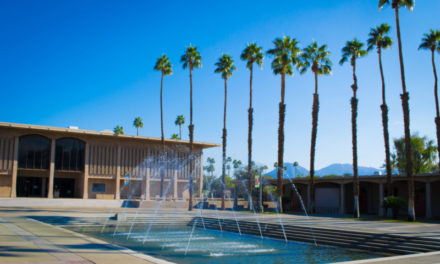My students and I were fortunate to partner, again this year, with California Department of Fish and Wildlife (CDFW) and raise rainbow trout in our classroom.
The “Trout in the Classroom” program is a program that includes 10 hours of teacher training with CDFW and a permit that allows one to raise rainbow trout.
On Oct. 18, 2018 my students and I received approximately 200 eggs. We then spent the next eight weeks learning all about these fish. The students learned about their lifecycle, habitat, and the ecosystem they need to survive. Our habitat was a 40-gallon aquarium with a chiller to keep the water temperature at a constant 55 degrees along with river rocks to emulate an actual rainbow trout habitat.
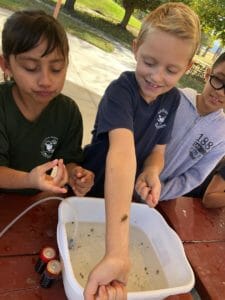 We needed to check the eggs on a daily basis and if there was a dead egg it needed to be removed from the tank.
We needed to check the eggs on a daily basis and if there was a dead egg it needed to be removed from the tank.
When the eggs are developing from the egg stage to the larvae stage, the tank needs to be covered and kept away from fluorescent lighting as this type of lighting can cause abnormalities. The students had only about 10 minutes to find dead eggs and remove them before having to recover the tank. Every day the students played an integral part in the raising of the rainbow trout from the egg stage to the larvae stage and finally the fry stage.
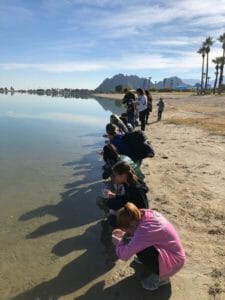 It is at the fry stage that the fish are able to be released. On Dec. 12, 2018, my students and I met interpreters from the California Department of Fish and Wildlife Office in Ontario, Calif., at Lake Cahuilla to help us release our rainbow trout. (Lake Cahuilla is one body of water in which we can release. The next closest lake is Lake Hemet.)
It is at the fry stage that the fish are able to be released. On Dec. 12, 2018, my students and I met interpreters from the California Department of Fish and Wildlife Office in Ontario, Calif., at Lake Cahuilla to help us release our rainbow trout. (Lake Cahuilla is one body of water in which we can release. The next closest lake is Lake Hemet.)
The four interpreters had stations set up for the students. The stations ranged from the food rainbow trout would eat in the wild to a fishing pole casting station (for many of my students and a couple of parent volunteers, this was the first time they had ever held a fishing pole, let alone practiced casting), to the actual releasing of the rainbow trout.
This was an amazing opportunity for any student and I am thankful my third graders were able to partner with California Department of Fish and Wildlife. This will hopefully be an annual project in my class and younger students are already looking forward to third grade so that they can participate.

